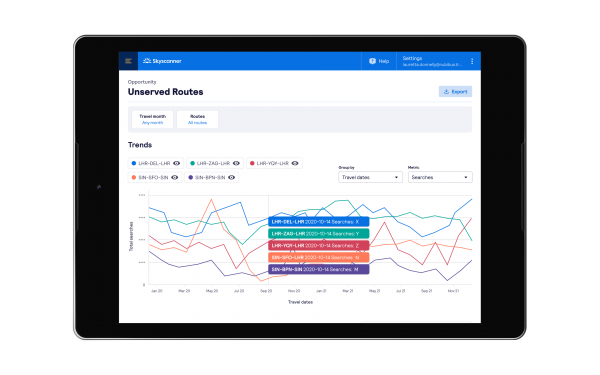LONDON, 25 January 2021: Skyscanner launched a new solution within their Travel Insight Vision business intelligence tool that identifies untapped demand for new direct flight services.
With the pandemic rendering last year’s data virtually irrelevant, this new tool will help airlines and airports leverage forward-looking search and intent data to predict demand and identify new and more profitable route opportunities.

The ‘Unserved Routes’ module provides a first-of-its-kind data segmentation for the global aviation sector, combining flight schedule data with traveller demand insights.
Unlike other data sources which focus on historic or completed bookings for route planning and yield management, Skyscanner’s solution allows airlines and airports to forecast and understand forward-looking demand to restart or create new non-stop services up to 12 months into the future.
Analysis of each route includes search and redirect volumes, average fare prices and conversion rates, with the ability to filter by travel month.
As a teaser, Skyscanner illustrated unserved routes for the APAC market that could have commercial potential. It gave examples that included Bali to Manchester, Phuket to London Heathrow and New Delhi to Dublin.
Skyscanner data products lead Michael Docherty commented: “With signs of recovery on the horizon, we’re unlocking even more of Skyscanner’s unrivalled demand data to help our partners across the aviation sector understand evolving traveller needs. Covid-19 has exposed the limitations of historical data for route planning and management as well as the need to make smarter, faster decisions. Our new Unserved Routes module within Travel Insight Vision has been designed with airlines and airports in mind, allowing them to forecast daily market demand, build business cases for restarting certain direct routes or even expanding into new ones.”
Travel Insight analyses the behaviour of millions of Skyscanner users to reveal where people are looking to travel in the next 12 months, allowing airlines and other businesses to rapidly respond to market changes, understand emerging trends and optimise or plan new routes.







